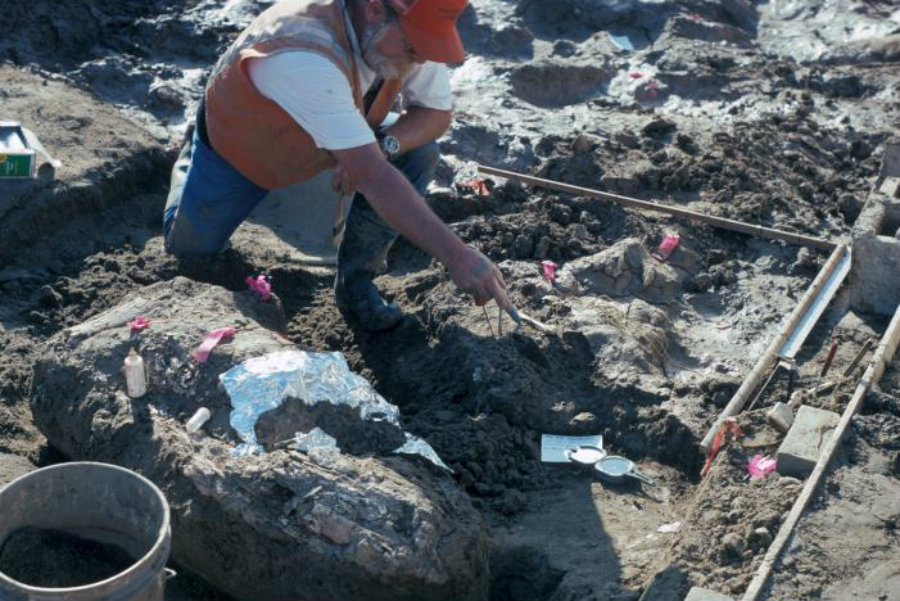Archaeologists found new evidence that suggests the possibility of ancient hominids living in the state of California at least 130,000 years ago. They found mammoth teeth and bones which have been clearly smashed by rocks.
Researchers claim that the fossils were evidently broken on purpose by someone with “dexterity and experimental knowledge.”

Humans arrived in America earlier than we thought
The remains were found at the Cerutti Mastodon site, which dates from the early late Pleistocene. Researchers found bone and teeth fragments revealing that they were fractured while fresh. There are also five hammer stones and anvils that show wear and impact marks, which could have hardly occurred from natural sources.
After a radiometric study, it was determined that the remains are between 9.4 and 130.7 thousand years old. Apparently, there were an unidentified species of Homo at the site during that time. Furthermore, those hominids knew how to use basic tools for extracting bone marrow or processing the materials for production.
If this is true, then the Cerutti Mastodon site is the oldest archaeological site in North America, altering theories of when the Homo arrived at the continent.
According to the researchers, led by Dr. Stephen R. Holen from the Center for American Paleolithic Research, for archaeological remains to be identified as human they must include evidence found in an undisturbed geologic context, they must be submitted to radiometric dating, there should be different sources of data from interdisciplinary studies, and there should also be unquestionable artifacts at the site.
“The bones and several teeth show clear signs of having been deliberately broken by humans with manual dexterity and experiential knowledge,” stated Dr Holen.
The Cerutti Mastodon site, located o the outskirts of San Diego county, California, was first excavated in 1992 after it was discovered during the expansion of a freeway. Shortly, researchers found stone tools and bones. Remains of other mammals have already been found at the site, although the most interesting are by far those of the mastodon, which include two tusks, 16 ribs, four vertebrae, and over 300 bone fragments. The bones were piled up in different spots.
Some nearby cobblestones were ridden with bone fragments, which goes to show that the bones were damaged by hitting them with the stones. Other proposed hypotheses, such as trampling, weather, and modification of eating habits, do not match the observations, as no carnivores at the time were able to break those bones without help. Besides, there are no other indicators of carnivores being at the site.
To assure that the bones were broken from hitting them with rocks, researchers carried out lab experiments to see if the same conditions could be replicated. On three different trials, they were able to reproduce similar breakage signs on bones effectively.
If the theories are true, then the arrival of man to America would be set 100,000 years earlier than it was initially thought. Researchers cite the need of looking for more clues concerning the earliest days of man in the continent.
Source: Nature
